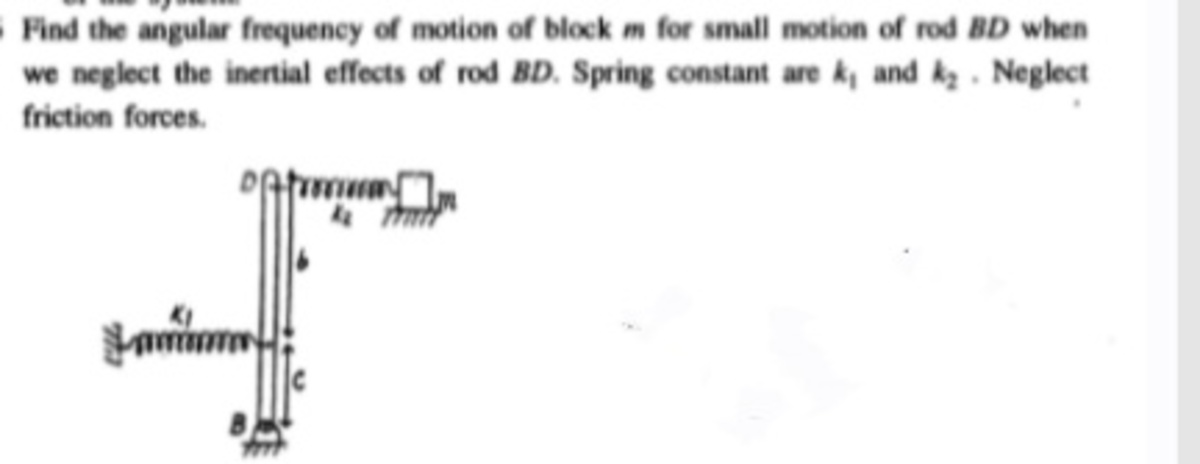Time Period of SHM
 I wanna know how to solve this problem using Energy method , i have got answer using Torque method .
I wanna know how to solve this problem using Energy method , i have got answer using Torque method .
No vote yet
1 vote
 I wanna know how to solve this problem using Energy method , i have got answer using Torque method .
I wanna know how to solve this problem using Energy method , i have got answer using Torque method .
Easy Math Editor
This discussion board is a place to discuss our Daily Challenges and the math and science related to those challenges. Explanations are more than just a solution — they should explain the steps and thinking strategies that you used to obtain the solution. Comments should further the discussion of math and science.
When posting on Brilliant:
*italics*or_italics_**bold**or__bold__paragraph 1
paragraph 2
[example link](https://brilliant.org)> This is a quote# I indented these lines # 4 spaces, and now they show # up as a code block. print "hello world"\(...\)or\[...\]to ensure proper formatting.2 \times 32^{34}a_{i-1}\frac{2}{3}\sqrt{2}\sum_{i=1}^3\sin \theta\boxed{123}Comments
@Steven Chase sir , @Mark Hennings sir pls help
I just wrote the energy equation,but on differetiating wrt to time , i am not getting time period as such . Maybe something more needed . @Steven Chase sir what u think ?
Log in to reply
I derived some equations for the dynamics, but they don't straightforwardly indicate an oscillation rate. They form a system of coupled differential equations in two variables.
Log in to reply
@Steven Chase sir , in the energy equation at an intermediate state, by diff wrt to time , there is w term coming up , what should be the other equation be like as such equilibrium condition dont give any equation . Can u show the coupled differential equation , maybe it can help in getting the required answer . ( Torque analysis really solves the problem by considering torque about hinge point and one force equation for block M)
Log in to reply
Let θ be the clockwise angle of the rod with respect to the vertical. Let xb be the horizontal position of the block relative to its starting position. I used Lagrangian mechanics to derive the following equations. By inspection, these would also result from force / torque analysis.
For small angles θ:
mxb¨=−k2(xb−(b+c)θ)Iθ¨=−k1c2θ+k2(b+c)(xb−(b+c)θ)